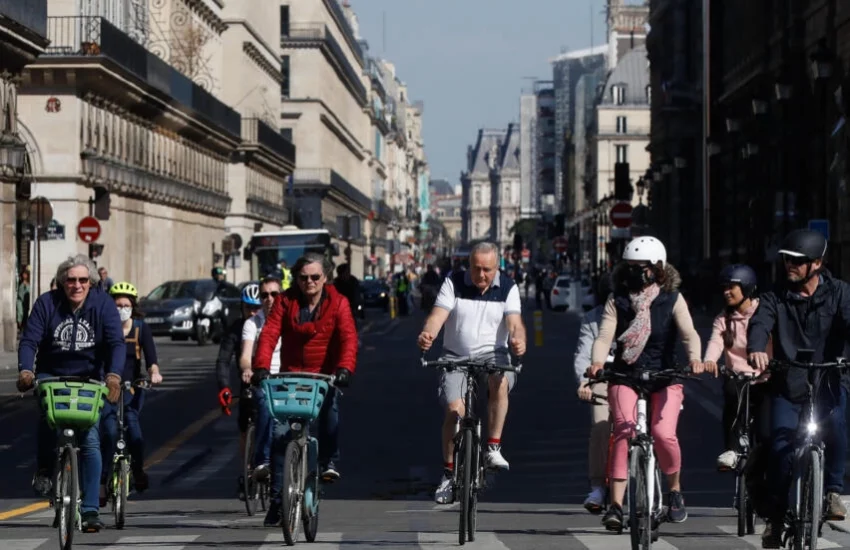Reinventing Government One App at a Time
 On one hot day last June, along with civic hacking events in 83 cities participating in the first-ever National Day of Civic Hacking, the City of Palo Alto, California, held an outdoor festival of civic innovation. Approximately 5000 people showed up to discover and be inspired by a wide range of technology-related talks and solutions for delivering government in completely new ways. While some software hacking took place, the focus was on beginning both the education and conversation on defining civic innovation and answering why it is so important to all our communities. The festival was a success and was highly praised by the community and at a special event at the White House later in the summer.
On one hot day last June, along with civic hacking events in 83 cities participating in the first-ever National Day of Civic Hacking, the City of Palo Alto, California, held an outdoor festival of civic innovation. Approximately 5000 people showed up to discover and be inspired by a wide range of technology-related talks and solutions for delivering government in completely new ways. While some software hacking took place, the focus was on beginning both the education and conversation on defining civic innovation and answering why it is so important to all our communities. The festival was a success and was highly praised by the community and at a special event at the White House later in the summer.
This year, as a follow-up and to coincide with the 2nd National Day of Civic Hacking, the City of Palo Alto decided it was appropriate and timely to move from facilitating the discussion about community-driven civic ideas to helping to provide a platform to build solutions. And from this the Palo Alto Apps Challenge was born.
The motivation to take action
Palo Alto is a small, but notable city just south of San Francisco. It’s the birthplace and heart of Silicon Valley. The city continues to be a place where great ideas emerge and come to fruition. Ideas here change the world. As the local public agency, Palo Alto has both a responsibility to leverage this environment and experiment with delivering services that take advantage of both state-of-the-art technology and local talent. It’s now clear that many other agencies watch us in order to learn what works and what doesn’t; the good and the bad. All of these characteristics form the motivation for the technology-related projects we work on and the partnerships we create.
The Palo Alto Apps Challenge helps to fulfill this responsibility. Through this multi-month, American Idol-style competition, entrants primarily from Palo Alto—but also from surrounding communities–submit app ideas that they hope to build based on the theme of civic engagement. The challenge is managed out of the City Office of the Chief Information Officer (CIO). Other departments assist as appropriate since an initiative such as this requires a wide variety of resources. Funding is largely through sponsors with the City only contributing a small amount for some project management assistance. The challenge is enthusiastically endorsed and supported by both the City Council and City Manager.
How does the challenge work?
The challenge works as follows. Ten finalists are chosen by a panel of judges—all Palo Alto residents with a technical or public policy background—and then the finalists must set about building a working prototype of their idea. Next there is a showcase event where the community is invited to learn about the finalist apps and to provide meaningful feedback. The last event is the grand finale, a televised and Web-streamed show that will highlight the apps and entrants and then elicit the audience and community to vote on their choice for winner using their phones and computers. There will be a 1st, 2nd, and 3rd prizes of $3500, $1000, and $500, respectively. Winners will also be offered free incorporation services should they decide to form a business for their app. Winner retain all rights to their idea and app.
On one level the Palo Alto Apps Challenge is a practical and engaging event that should result in one or more solutions that provide value to the community. But we believe that this challenge is also about a deeper message.
It’s much more than an apps challenge
The future success of the US has much uncertainty. In the last few decades we’ve seen many of the traditional industries in America either disappear or be entirely reinvented. Anyone in the printed press industry knows exactly how this feels. The change is coming about as a result of globalization and massive automation. While many are pessimistic, within this shift is great opportunity. Automation is resulting in a world that is both software and data driven. Because of this, new skills and talent must emerge. As a nation we have to refocus on science, technology, engineering, and math (STEM)—and by the way, art too! Design is no longer an afterthought. The Palo Alto Apps Challenge is one way that one community can help to inspire a new generation of engineers and innovators. We never lose sight of this critical message and motivation.
What happens next?
At the time of writing, the judges had just announced the top 10 finalists. In total, 74 ideas were submitted and 30% of the entrants were under the age of 18. The ideas chosen represented an eclectic variety of solutions. There are ideas for making it easier to find parking spaces; an app for giving a voice to youth on City Council items; an idea that adds gamification to the process of learning about the city; and a solution for crowdsourcing places that have good and poor support for physically challenged individuals. Next up, the 10 finalists will showcase their ideas at a community event at the Palo Alto Art Center.
At the City of Palo Alto we’ve decided it can no longer be business as usual. We recognize it’s not just about apps. It’s so much more. We are pushing the envelope on new thinking across our departments while also ensuring the important and routine work of government gets done.
It’s a whole new day in local government and we are firmly engaged.
For more information on the Palo Alto Apps Challenge, go to http://www.hackpaloalto.org
A version of this article first appeared in the April 2014 edition of Transformations, the Alliance for Innovation newsletter.

